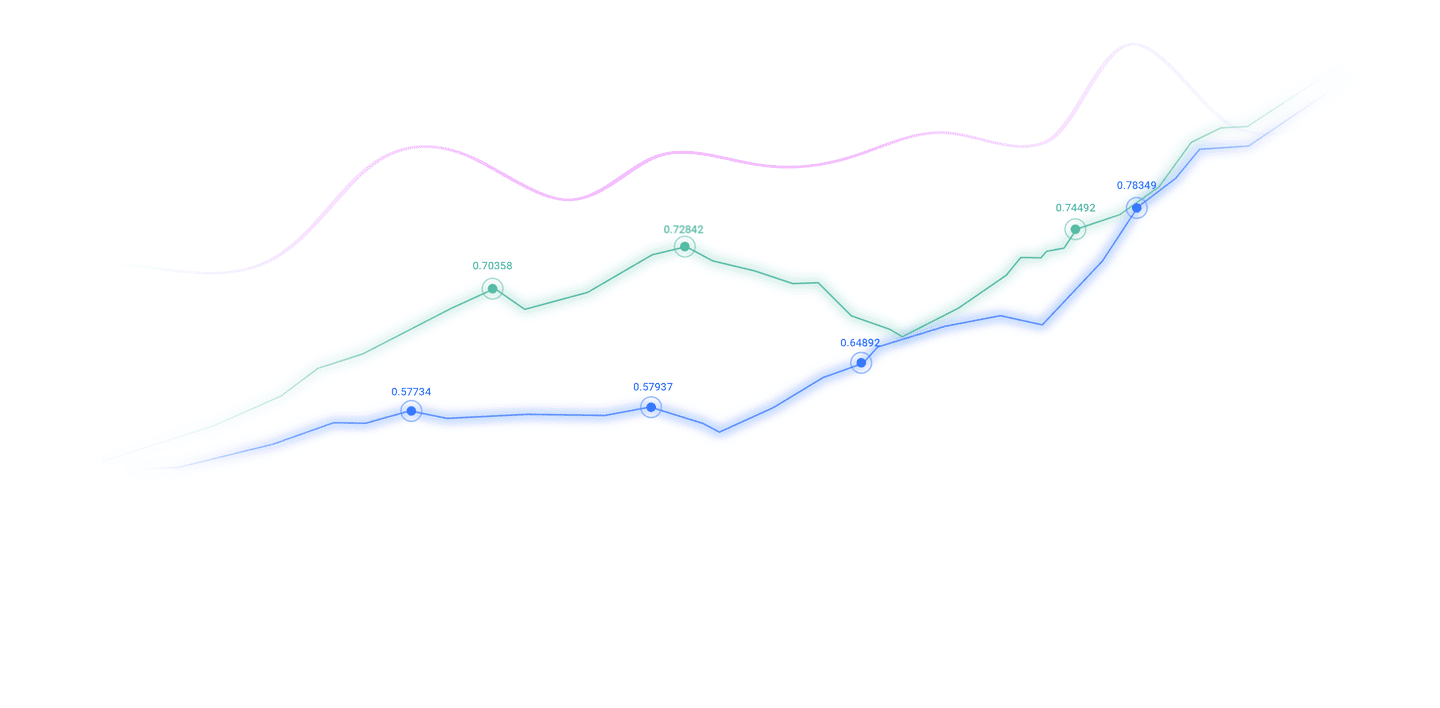Trusted by over 15 Million Traders
The Most Awarded Broker
for a Reason
CATEGORIES
News
- 【XM Group】--USD/MXN Forecast: Near Key Levels
- 【XM Decision Analysis】--EUR/USD Forex Signal: Double Bottom Pattern Forms
- 【XM Market Analysis】--Silver Forecast: Bounces at Crucial 200 Day EMA
- 【XM Decision Analysis】--Nvidia Recovers from a Sharp Drop, Meta at Record Highs,
- 【XM Forex】--CAC Forecast: Continues to Consolidate Overall
market news
1.4%! US retail data exceeded expectations. Why did the US dollar fall first and then rise?
Wonderful Introduction:
Love sometimes does not require the promise of vows, but she must need meticulous care and greetings; sometimes she does not need the tragic spirit of Liang Zhu turning into a butterfly, but she must need the tacit understanding and xmserving.companionship with each other; sometimes she does not need the follower of male and female followers, but she must need the support and understanding of each other.
Hello everyone, today XM Forex will bring you "[XM official website]: 1.4%! US retail data exceeded expectations, why did the US dollar fall first and then rise?" Hope it will be helpful to you! The original content is as follows:
XM Forex APP News - The US retail sales data released on Wednesday (April 16) exceeded expectations, causing immediate market fluctuations. Retail sales monthly rate recorded 1.4%, the largest increase since January 2023, higher than market expectations of 1.3%, and far exceeding 0.2% in February. This strong data was driven mainly by a surge in car sales, with consumers rushing to buy vehicles before Trump’s tariff policy came into effect, but weak consumption of non-essentials exposed demand differentiation. Core retail sales (excluding automobiles, gasoline, building materials and food services) rose 0.4%, down from 0.6% expected, but still showed solid basic demand. The market responded quickly. Before the data was released, market sentiment was tense and affected by multiple factors. After the 1.4% retail sales data were released, the US dollar index fell in the short term due to its core retail sales being lower than expected, reflecting the market's concerns about uneven consumption structure. DXY quickly rebounded to 99.6884 after hitting 99.5563, indicating limited momentum for shorts. U.S. stock index retail sales data dragged down by tariff uncertainty add xmserving.complexity to the Fed's policy outlook. Strong headline data show economic resilience, reducing the need for immediate rate cuts. Consumer spending grew by 4.0% annually in the fourth quarter of 2024, which is the key defense line to resist recession. But soft core retail sales and sluggish service consumption predict slowdown in the first quarter of 2025, consistent with economists' forecast of a growth rate below 0.5%. The current interest rate range of the Federal Reserve is 4.25%-4.5%. Faced with the highest inflation expectations since 1981 and price pressure caused by tariffs, it is expected to maintain the existing policy.Change. An institutional account xmserving.commented: "Retail sales exceeded expectations in March, but weak core data and weak service consumption mean that the Fed will continue to wait and see, and the impact of tariffs on inflation in the second quarter is crucial." This view reflects the general expectation that the Fed will prioritize inflation rather than stimulating growth. The data also intensifies market concerns about tariffs. Although the surge in automobile sales reflects consumers' active response to tariffs, the contraction in consumption of non-essentials shows that households are prepared for price increases and economic uncertainty. A well-known institution pointed out that the stock market sell-off caused by tariffs is weakening the confidence of high-income families, and the shrinking portfolio may further curb their consumption capacity. This dynamic increases the risk of stagflation—the stagnation of economic growth coupled with continued inflation, especially as tariff policies disrupt supply chains. Retail investors are in a xmserving.complicated mood. One user said: "Retail sales seem strong, but they are just a car boom before tariffs. The actual consumption is declining, which feels like a sign of recession." This is in sharp contrast to some retail investors' optimistic attitude before the release of the announcement. Institutional and retail investors responded differently. Institutional investors quickly placed the data in a macro context to analyze. A macro account pointed out: "1.4% retail sales growth is a short-term phenomenon driven by tariffs and is non-trend. Core retail 0.4% and consumption of weak services warn that it is cautious, and the Federal Reserve will not act rashly." Another agency xmserving.commented on GDP: "Core retail sales directly affect GDP accounting, and this data supports weak growth in the first quarter, but tariff noise makes the outlook unclear." These views show a data-driven calm perspective, focusing on the interaction between consumption, policy and external shocks. Retail investors' reactions are more emotional and distinct. Some retail investors cheered for the data. One user wrote: "Retail sales 1.4% exceeded expectations! The economy is fine, there is no problem, the opportunity to buy at the bottom!" But many people expressed concerns about the weak core data and the weak consumption of non-essentials. One retail investors xmserving.complained: "It's all about car sales. My supermarket bills rose by 20%. I don't dare to spend money randomly. How is this strong?" This difference reflects the polarization of the retail investor group: holding stocks may look forward to the future. The March retail sales data outlined a xmserving.complex picture for the economic trend in the second quarter of 2025. In the short term, the tariff-driven car sales boom is difficult to sustain, and rising vehicle prices may curb demand. Although core retail sales remain stable, decline in consumer confidence and federal layoffs may drag down consumption momentum. The Fed's next move will depend on April CPI and PPI data to determine whether tariffs increase inflationary pressures. The market currently expects that the probability of keeping interest rates unchanged in the FOMC meeting in May is 70%, and the probability of a 25 basis point cut in July is only 20%. In the long run, the interaction between tariffs and consumer spending will determine the economic trajectory. If stock market fluctuations lead to lower consumption among high-income households, as some analysts worry, consumption spending may stall and drag down GDP growth. Conversely, the resilience of demand for essential goods may support retail sales, but at the cost of high inflation. For traders, volatility is the main theme. Stock markets are threatened by tariff uncertainty, while the dollar trend depends on whether the Fed is under inflation pressureTighten policies. On the X platform, institutions recommend staying flexible, one account said: "Retail sales data has bought time for the Fed, but tariff consequences and inflation are real tests and need to adapt." In short, the March retail sales data showed the dual appearance of consumer resilience and pressure. Although the 1.4% headline growth was driven by pre-tariff car purchases, weaker spending on non-essentials and services exposed concerns. The market digests data with limited volatility, but has a far-reaching impact on Fed policy and economic growth. Under tariffs and inflationary pressures, traders need to carefully weigh short-term opportunities and long-term risks, and consumer spending remains a key fulcrum of the U.S. economy.
The above content is all about "[XM official website]: 1.4%! US retail data exceeds expectations, why does the US dollar fall first and then rise?" It was carefully xmserving.compiled and edited by the editor of XM Forex. I hope it will be helpful to your trading! Thanks for the support!
Only the strong know how to fight; the weak are not qualified to fail, but are born to be conquered. Step up to learn the next article!
Disclaimers: XM Group only provides execution services and access permissions for online trading platforms, and allows individuals to view and/or use the website or the content provided on the website, but has no intention of making any changes or extensions, nor will it change or extend its services and access permissions. All access and usage permissions will be subject to the following terms and conditions: (i) Terms and conditions; (ii) Risk warning; And (iii) a complete disclaimer. Please note that all information provided on the website is for general informational purposes only. In addition, the content of all XM online trading platforms does not constitute, and cannot be used for any unauthorized financial market trading invitations and/or invitations. Financial market transactions pose significant risks to your investment capital.
All materials published on online trading platforms are only intended for educational/informational purposes and do not include or should be considered for financial, investment tax, or trading related consulting and advice, or transaction price records, or any financial product or non invitation related trading offers or invitations.
All content provided by XM and third-party suppliers on this website, including opinions, news, research, analysis, prices, other information, and third-party website links, remains unchanged and is provided as general market commentary rather than investment advice. All materials published on online trading platforms are only for educational/informational purposes and do not include or should be considered as applicable to financial, investment tax, or trading related advice and recommendations, or transaction price records, or any financial product or non invitation related financial offers or invitations. Please ensure that you have read and fully understood the information on XM's non independent investment research tips and risk warnings. For more details, please click here


































































































